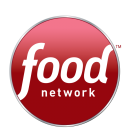Every year, new goods, services, and technologies emerge in the food and beverage business that shape the trends. As a business owner, you need to stay one step ahead of the competition and try to predict what will happen next to make sure you are ready for the next year’s business activities.
In this blog article, we’ll look at some of the latest food and beverage trends. So, whether you’re a professional chef, a foodie, or someone who enjoys cooking for themselves after playing some video poker, keep reading as we look at the top food and beverage trends that will shape the business in 2023.
The Emergence of New Superfoods
People are always looking for new and better ways to eat, so there are always new superfoods hitting the market. By 2030, the market for superfoods is predicted to be worth around US$ 246.2 billion, expanding at a CAGR of 4.82% from 2022 to 2030.
The foods on this list are known as “superfoods” because they have many health benefits, such as boosting the immune system, reducing inflammation, and improving digestion.
- Moringa is an Indian plant that’s becoming more and more popular because it’s full of vitamins and minerals. It’s often used in powder form and added to smoothies or other beverages.
- Cactus water: Cactus water is becoming more and more popular to stay hydrated and get more nutrients than traditional sports drinks. It’s rich in antioxidants and electrolytes and has a slightly sweet taste.
- Black garlic։ This is old garlic that has been fermenting for a few weeks. Black garlic tastes milder than raw garlic and is easier to digest. It also has a lot of antioxidants and compounds that fight inflammation.
- Maca root: Maca root is a popular superfood that comes from Peru and is known for giving people more energy. It’s often added to smoothies or baked goods as a powder.
The popularity of superfoods is also driven by the rising demand for plant-based and vegan diets. More and more food and drink companies are adding these “superfoods” to their products, giving customers new and healthy choices.
The rising popularity of snackable, healthy treats
Today’s consumers aren’t just interested in traditional meals but also want snack options that are convenient, healthy, and pack a nutritious punch. Why? People today are busy and want snack options that are quick, healthy, and filling without sacrificing taste or quality. This has led to a surge in demand for snackable, healthy treats that not only satisfy hunger cravings but also provide sustained energy.
Many of these snacks are made with whole food ingredients that are low in sugar and artificial additives, making them an excellent choice for those who are conscious of their health. Energy balls, protein bars, and fruit snacks are some of the most popular snacks. Companies make a wide range of flavors and options to meet the needs of people with different diets.
Due to rising demand, the food industry is becoming more innovative. More and more companies are looking for new ingredients and ways to combine flavors for their products.
Exploration of Global Cuisines and Flavors
Food and drink companies are learning more about cuisines and flavors from around the world. This gives customers more choices. Consumers are becoming more open-minded and interested in other cultures, which is driving up the demand for food from other countries. People are eating more Mexican, Indian, and Korean food, and dishes like tacos, curries, and bibimbap are becoming more popular.
The global market for ethnic foods is expected to grow at a CAGR of 10.33% from $49.27 billion in 2021 to $98.06 billion in 2028.
Food companies are also looking into fusion cuisines, which combine flavors and ingredients from different cultures to make dishes that are new and interesting. This trend is growing because more and more people are interested in food travel and want to try new and different foods. And did you notice that social media is also helping to make global cuisines more popular? Influencers share their favorite dishes from around the world, which encourages other people to try them.
In the coming years, more people will want to try food from all over the world and learn more about its different flavors and cuisines. This trend is also leading to new ideas in the food industry, where companies are trying out new ingredients and cooking methods to make dishes that are both interesting and tasty.
Automation and robotics in food production processes
In the last few years, robotic systems have started to be used in almost every step of the food supply chain, from the farm to the restaurant. Robots and automation are used in different parts of the food production process, including harvesting, processing, packaging, and shipping.
This technology offers several benefits, including increased efficiency, consistency, and quality control. Automation and robotics also help to reduce human error and improve workplace safety, making them an attractive investment for food companies. The use of automation and robotics is expected to grow in the coming years, with more companies adopting this technology to stay competitive.
Read Also: Savoring La Bella Vita: Traditional Italian Bread Journey – F & B
Emission reduction and sustainable packaging
As consumers become more environmentally conscious, food and beverage companies are taking steps to reduce their carbon footprint. Sustainable packaging is a big area of focus, with companies looking for new eco-friendly and recyclable materials and designs. Many companies are opting for biodegradable or compostable packaging made from renewable resources, such as plant-based materials like cornstarch or seaweed.
Companies are also investing in renewable energy sources and looking for ways to reduce emissions in their production and supply chains, in addition to using sustainable packaging. This includes using efficient ways to get around, like electric or hybrid cars, and making sure that the logistics of the supply chain are set up to reduce carbon emissions as much as possible.
Consumers want eco-friendly products more and more, and companies that don’t care about sustainability risk losing market share. In the coming years, sustainable practices will become more and more important for food and beverage companies as people learn more about climate change.
Conclusion
Business owners must keep relevant food and beverage trends to stay competitive. New superfoods, snackable, nutritious delights, worldwide cuisines, automation and robots in food manufacturing, emission reduction, and sustainable packaging are expected in 2023.
Companies are offering more plant-based, vegan, and ethnic foods as consumers demand healthful, sustainable, and convenient solutions. Businesses are also investing in technology to cut expenses and environmental effects. These developments indicate a healthier, more sustainable food and beverage business.








